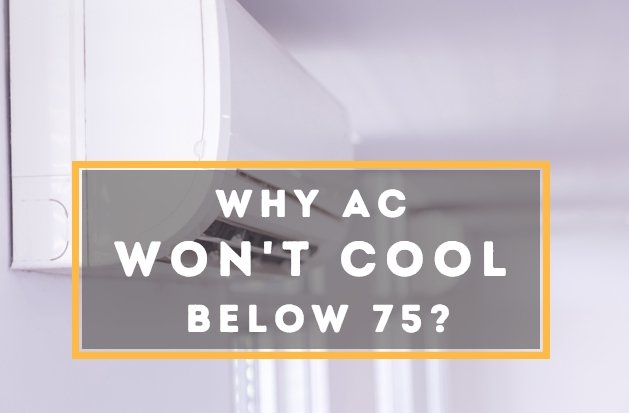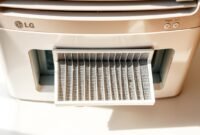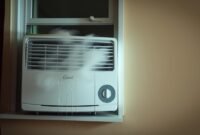An air conditioner (AC) is vital for cooling your home, improving indoor air quality, and maintaining a comfortable living environment. However, issues can arise, such as when your AC system struggles to cool your home below 75 degrees Fahrenheit.
However, it can sometimes encounter problems, such as an inability to cool below 75 degrees Fahrenheit.
When faced with this problem, it is essential to address it promptly by following the appropriate troubleshooting steps or seeking professional assistance. Let’s explore the causes of this issue and how to deal with it here.
Why My AC Temperature Is Not Going Down?
Several factors can contribute to this issue, ranging from simple adjustments to more complex underlying problems. Here are some common reasons:
Read also: Coldest Temperature for an Air Conditioner
● Incorrect Thermostat Settings
The thermostat is the control hub of your HVAC system, enabling you to set the temperature to cool your home efficiently. The AC may not cool the space adequately if the set temperature is too close to the current room temperature.
However, suppose the thermostat is set too close to the current room temperature. In that case, the AC may not receive the signal to cool further, resulting in insufficient cooling.

● Dirty Air Filters
Clogged or dirty air filters can obstruct the airflow and impede the cooling efficiency of your AC system. Over time, dust, dirt, and debris accumulate on the filters, reducing the airflow and preventing cool air from circulating effectively.
● Insufficient Refrigerant
Refrigerant is essential in the cooling process of your HVAC system. If a leak or your system has insufficient refrigerant, it can struggle to cool your home effectively, particularly below 75 degrees. If there is a refrigerant leak or your AC system has insufficient refrigerant, it can struggle to cool your space effectively.
● Inadequate Insulation
Another possible cause if your AC won’t go below 70 is insufficient insulation which can result in heat transfer, making it difficult for your air conditioner to cool the space effectively.
● Dirty Condenser Coils
The condenser coils in your outdoor unit release heat from the refrigerant into the outdoor air. Suppose the coils are dirty or covered in debris. In that case, it hinders the heat transfer process, reducing the cooling capacity of your air conditioner.
If the evaporator coil is dirty or malfunctioning, it can hinder the AC’s efficiency, making it challenging to reach temperatures below 75 degrees. Regular maintenance of these components is crucial for optimal performance.
● Improper Sizing
Lastly, the size of your air conditioner is essential for optimal cooling. If your AC unit is too small for the space it needs to cool, it must reach lower temperatures. On the other hand, a large AC may cycle on and off frequently, failing to dehumidify the air adequately.
● Electrical Issues
Electrical issues, such as a tripped circuit breaker, can also impact your AC’s ability to cool your home. If your air conditioner won’t cool below 75, it’s worth checking your home’s electrical panel to ensure that the AC’s circuit hasn’t tripped, which could impede its cooling capacity.
What to Do If Air Conditioner Won’t Cool Below 75
If your AC struggles to cool your space below 75 degrees Fahrenheit, it’s essential to address the issue promptly to restore comfort and efficiency. Here are some troubleshooting tips to help you get your AC back on track:
● Check Thermostat Settings
Start by checking your thermostat settings. Ensure it is set to the “cool” mode and the temperature is lower than the current room temperature. Also, ensure external heat sources like sunlight or appliances do not impact the thermostat.
Read also: What Temperature to Set Air Conditioner in Winter?
● Clean or Replace Air Filters
Dirty air filters can limit airflow and lower AC cooling capacity. Check and maintain air filters as needed. Filters should be cleaned or replaced every 1-3 months, depending on usage and environment.
● Remove Obstructions from Vents and Registers
Check for obstructions in your home’s vents and registers. Obstacles in front of vents can block airflow and hinder cooling. Clear obstructions and ensure the vents are open and unobstructed to maximize airflow.
● Inspect for Air Leaks
Inspect for air leaks to prevent warm air infiltration and cool air escape. Check for gaps, cracks, or insufficient insulation in windows, doors, and other areas. Seal leaks to improve energy efficiency and AC performance using weatherstripping, caulk, or other methods.
● Clean the Condenser Unit
The condenser unit is vital for cooling. Over time, debris can affect performance. Disconnect the power and clean the condenser coil with a soft brush or vacuum with a brush attachment. Lastly, remove any vegetation or debris around the unit that may impede airflow.
If the problem continues, consider scheduling a professional HVAC maintenance service. A certified technician will thoroughly inspect why your air conditioner won’t cool below 75. They can also perform necessary repairs or adjustments to restore your AC’s cooling performance.


